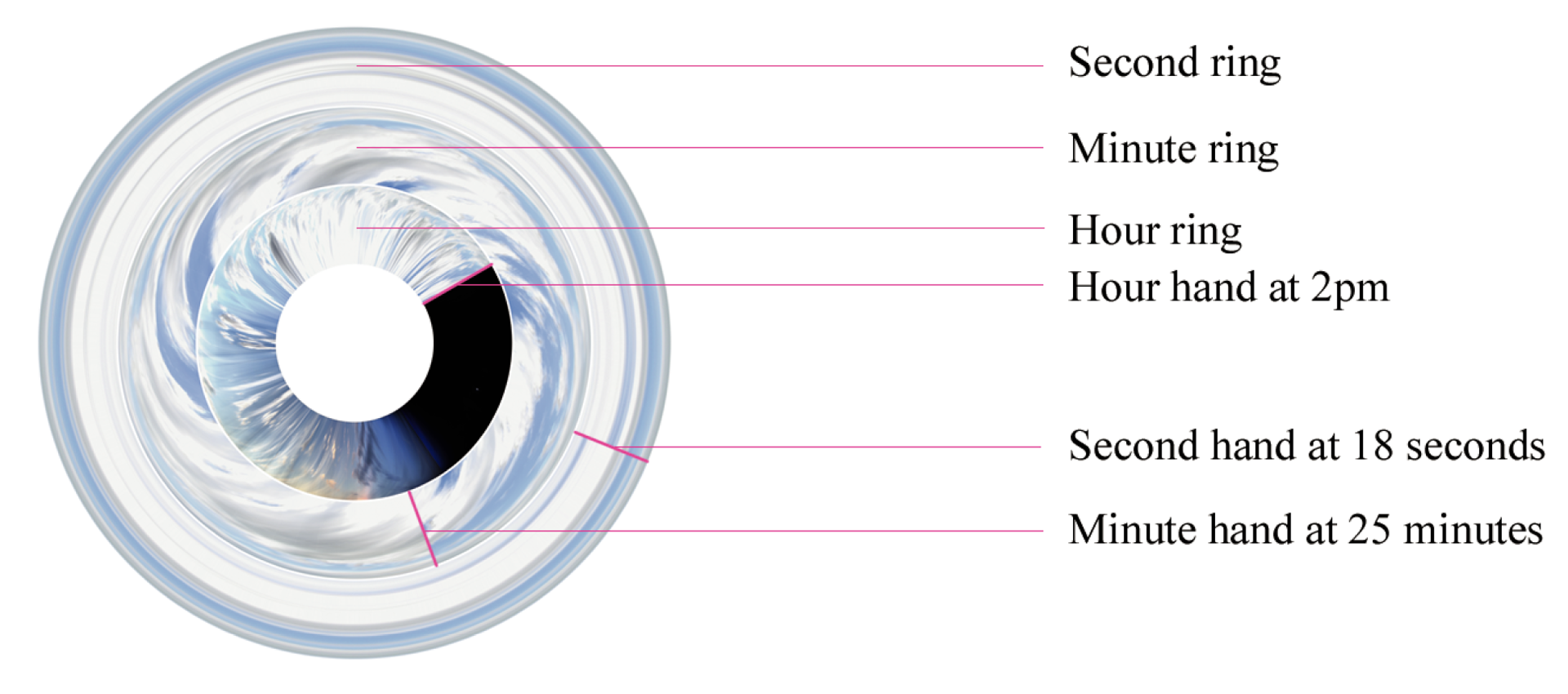“The ‘Last’ Clock” by Cooper and Ängeslevä
Conference:
Experience Type(s):
Entry Number: 14
Title:
- The 'Last' Clock
Organizer(s)/Presenter(s):
Description:
‘Last’ is a clock the face of which is a record of its own history. Like a familiar analogue clock, it has a second hand, a minute hand and an hour hand. The hands are arranged in concentric circles, the outermost ring being seconds, the middle ring is minutes, and the innermost ring hours, see Figure 1. The major difference to a regular clock is that each of the hands of ‘Last’ are made from a 1 pixel wide vertical slice of video feed. As the hands rotate around the face of the clock they leave a trace of what has been happening in front of the camera. This means that in the outer ring you can see what has happened in the last minute, the middle ring shows the last hour and the inner ring shows the last 12 hours. Once ‘Last’ has been running for at least 12 hours you end up with an easy-to read mandala of archived time.
The video feed for ‘Last’ can be any video source: A camera mounted on in the centre of the clock face, looking at what is happening in front of it, a remote camera streamed over the internet or TV signal fed directly to the clock. The clock can thus display the local space, remote space or media space respectively.
Physically ‘Last’ works very well on a large display in a public space. It encourages people to interact with (when the camera is in the same space) to create an ever changing, often beautiful, interactive digital painting. It can also be seen as a dynamic aesthetic object, responding to and reflecting its environment while providing an ambient view of the recent history of the space.
Although ‘Last’ can be fed by any video source, the best results are when the feed is of the highest resolution, using a Digital Video camera and taking a horizontal slice means each hand of the clock is 720 pixels wide. The combined image is over 6000 pixel wide. These images are beyond the capabilities of current display technology, so the live camera usually only displays at standard projector resolution 1024 x 768 but when a single moment is chosen an image at this full resolution can be printed out at large scale with very high detail. The printed images provide both a snapshot of a place at a specific time, Figure 1 being 2:25 pm and 18 seconds, and it also shows the last minute, hour and 12 hours before the moment of capture.





